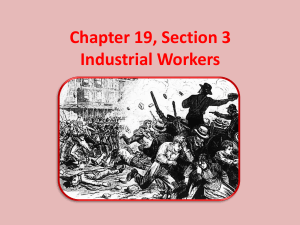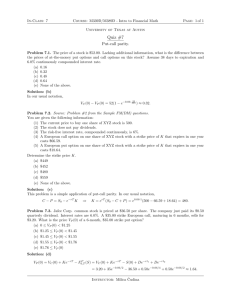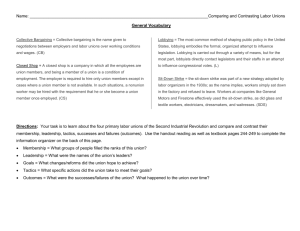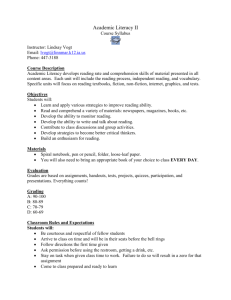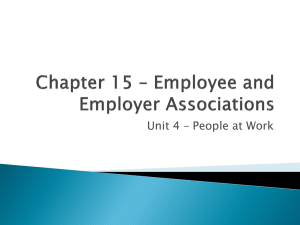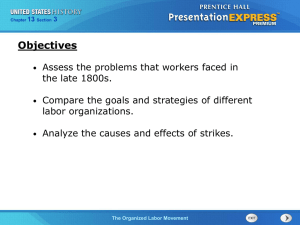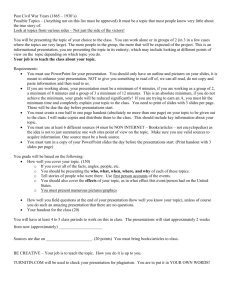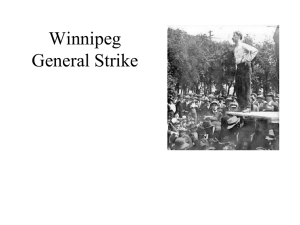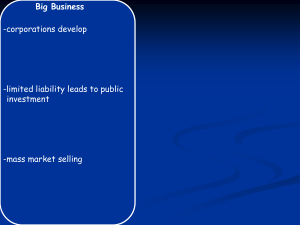Everything You Need to Know About Unions in
advertisement
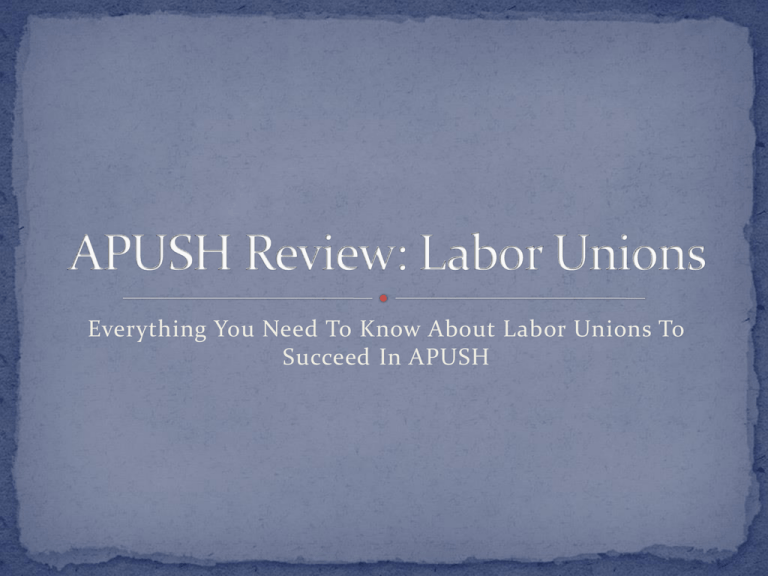
Everything You Need To Know About Labor Unions To Succeed In APUSH Commonwealth v. Hunt, 1830 Massachusetts Supreme Court Case Labor unions are legal, as long as they were not violent Leader? Terrence Powderly When? 1870s and 1880s, 730,000 members Members? Skilled AND unskilled Women and African Americans Downfall? Haymarket Square Riot Knights unfairly associated with anarchists Leader? Samuel Gompers When? Beginning in 1886 Members? Consisted of SKILLED workers only Issues? “Bread and Butter” 8 hour workdays Higher wages Leaders? Eugene Debs Mother Jones When? Early 1900s Members? Wanted to include skilled AND unskilled workers Tactics? Strikes Embraced class conflict Downfall? World War I “I Won’t Work” Great Railroad Strike (Great Upheaval) (1877) Reaction to wage cuts Hayes used federal troops to end the strike Homestead Strike (1892) Carnegie Steel Plant Workers clashed with security guards Pullman Strike (1894) Reaction to wage cuts Cleveland used troops to end the strike Anthracite Coal Mine Strike (1902) Coal workers went on strike Roosevelt threatened to seize mines if the owners would not negotiate Sherman Antitrust Act (1890) Established to break up trusts In actually, used to break up unions Clayton Antitrust Act (1914) Strengthened the Sherman Antitrust Act Exempted labor unions from prosecution Wagner Act (1935) National Labor Relations Act Guaranteed workers the right to strike Increased union membership Taft – Hartley Act (1947) Passed over Truman’s veto Outlawed “Closed shop” Led to a decrease in union membership Strike: Refusal to work Picket: Protesting, carrying signs Boycott: Refusal to buy goods Scabs: Strike breakers Often were immigrants Injunction: Court order, often used to force workers to stop striking “Yellow Dog Contracts”: Agreement that workers will NOT join a union Subscribe to my channel Help spread the word Good luck on your tests! Subscribe Now!!


